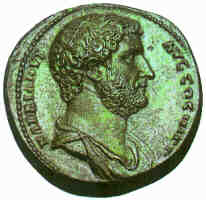
 Palestrina's house
Palestrina's house
Palestrina's house libray
Giovanni Pierluigi da Palestrina nacque a Palestrina, una cittadina vicino Roma, a quel tempo parte degli Stati della Chiesa. Effettuò quasi tutta la sua carriera a Roma. I documenti indicano che egli visitò la città per la prima volta nel 1537 quando divenne corista della basilica di Santa Maria Maggiore. Dal 1544 al 1551 Palestrina fu organista della chiesa (Sant’Agapito) principale della sua città natale e nell’anno successivo divenne maestro di cappella della Cappella Giulia, coro papale della basilica di San Pietro. La prima composizione da lui pubblicata, un libro di messe, fece così buona impressione su papa Giuilio III (papa dal 1550, che era stato prima vescovo di Palestrina) che egli venne nominato direttore musicale della Cappella Giulia. E per di più si trattava del primo libro di messe di un compositore italiano: negli stati italiani del suo tempo, molti compositori di musica sacra erano olandesi, francesi, spagnoli. Per sua sfortuna, il papa successivo, Paolo IV, costrinse alle dimissioni di tutti i cantori sposati o che avessero composto opere di musica profana, e Palestrina rientrava in tutte e due le categorie. Dovette dunque abbandonare il Vaticano, ma ottenne immediatamente la direzione musicale di San Giovanni in Laterano (dal 1555) e, successivamente, della Basilica di Santa Maria Maggiore (dal 1561). Nel 1571 ritornò alla Cappella Giulia e restò a san Pietro per il resto della sua vita. Gli anni ’70 furono difficili per la sua vita personale, perse suo fratello, due figli e la sua amata moglie Lucrezia Gori, in tre diverse ondate di pestilenza (1572, 1575 e 1580 rispettivamente). Sembra aver considerato in quel periodo l’idea di farsi prete, ma invece si sposò una seconda volta e questa volta con una ricca vedova romana, Virginia Dormoli, questo gli concesse finalmente l’indipendenza economica (considerato che come corista non era ben pagato) e continuò a comporre musica polifonica fino alla morte. Morì a Roma di pleurite nel 1594.
This is he library, where about six thousand volumes of music and musical critics are kept, together with a whole section devolved to the Renaissance culture, is on the second floor. Besides the biographical and bibliographical works kept there, one can also find a large section containing ancient manuscripts and editions dating back to the XVI and XIX century. Also this floor gives access to a further courtyard, that was once an ancient hanging orchard. From this very point one can admire the panorama of the town together with the near hills of "Castelli Romani".



